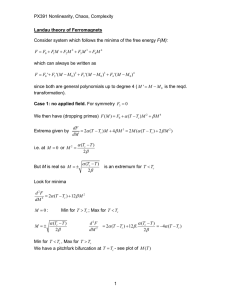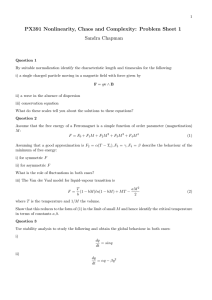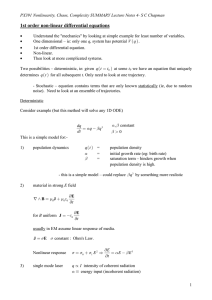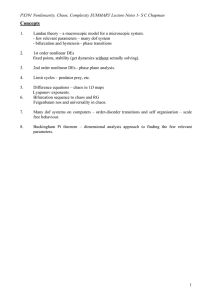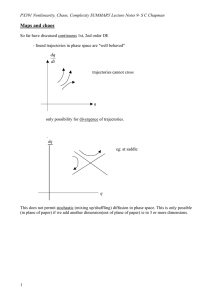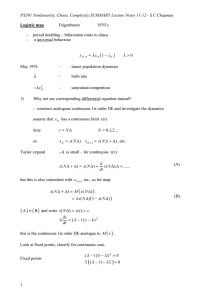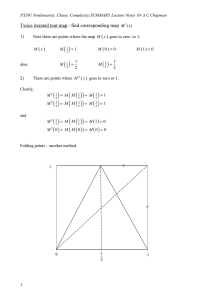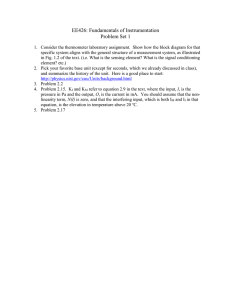Landau Theory II
advertisement
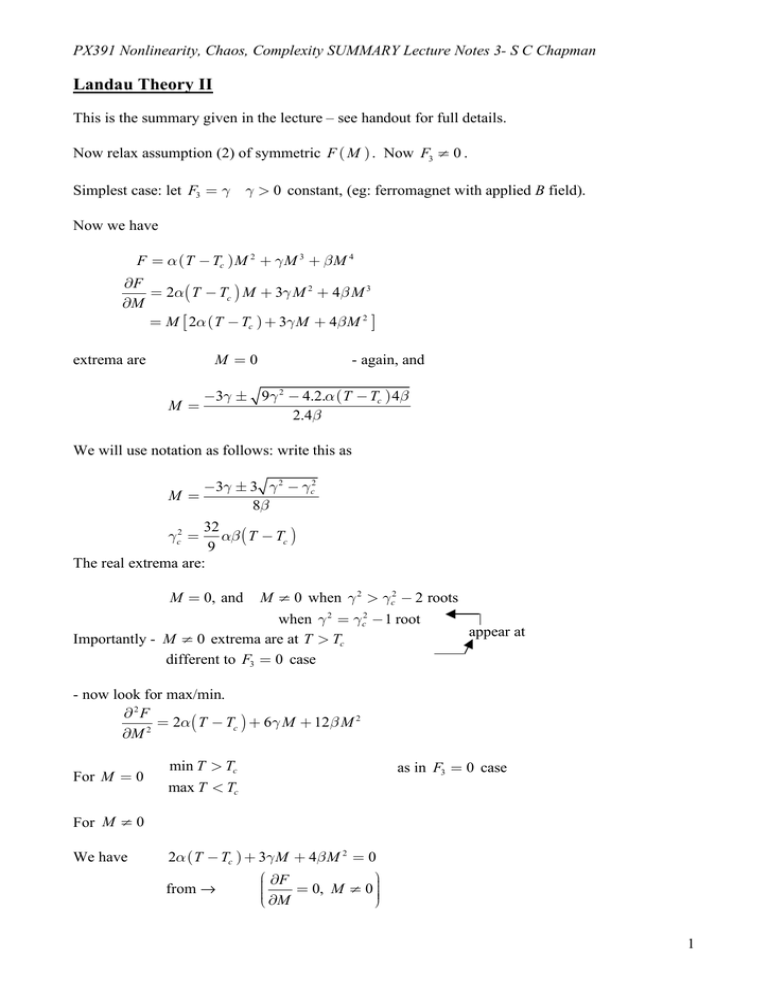
PX391 Nonlinearity, Chaos, Complexity SUMMARY Lecture Notes 3- S C Chapman Landau Theory II This is the summary given in the lecture – see handout for full details. Now relax assumption (2) of symmetric F ( M ) . Now F3 ! 0 . Simplest case: let F3 = ! ! > 0 constant, (eg: ferromagnet with applied B field). Now we have F = ! ( T ! Tc ) M 2 + " M 3 + # M 4 !F = 2!( T " Tc ) M + 3" M 2 + 4# M 3 !M = M [ 2! ( T ! Tc ) + 3" M + 4# M 2 ] M =0 extrema are M = - again, and !3! ± 9! 2 ! 4.2." ( T ! Tc ) 4# 2.4# We will use notation as follows: write this as !3! ± 3 ! 2 ! ! c2 M = 8" 32 ! c2 = "# ( T ! Tc ) 9 The real extrema are: M = 0, and M ! 0 when ! 2 > ! c2 ! 2 roots when ! 2 = ! c2 ! 1 root appear at Importantly - M ! 0 extrema are at T > Tc different to F3 = 0 case - now look for max/min. !2 F = 2!( T " Tc ) + 6" M + 12# M 2 2 !M For M = 0 min T > Tc max T < Tc as in F3 = 0 case For M ! 0 We have 2! ( T ! Tc ) + 3" M + 4# M 2 = 0 # !F & %% from → = 0, M " 0 ((( %$ !M ' 1 PX391 Nonlinearity, Chaos, Complexity SUMMARY Lecture Notes 3- S C Chapman So, !2 F = 3! M + 8" M 2 2 !M ! 3" $ = 8! M ## + M &&& #" 8! % for the case where M ! 0 !3! 8" - so one real M ! 0 root. passes through zero at M = this is when ! 2 = ! c2 otherwise ! ! ! c2 : !2 F = M #% ±3 ! 2 " ! c2 &( 2 $ ' !M - need to look at signs (handout) to classify max/min - but see that as we go from large T → small T the root goes Im→ Re To summarise - max/min behaviour M =0 M !0 min max real real 2 min x x x x imaginary 1 max, 1 min (+ root) (- root) T = Tc Tc ! Tc ! =! 2 2 c ! c2 > ! 2 !c = 0 2 PX391 Nonlinearity, Chaos, Complexity SUMMARY Lecture Notes 3- S C Chapman M min + ve root !3! 8" - ve root min 0 ! 2 = ! c2 T ! Tc 3 PX391 Nonlinearity, Chaos, Complexity SUMMARY Lecture Notes 3- S C Chapman Dynamics with T F T > Tc ! c2 > ! 2 M T > Tc , ! c2 < ! 2 T = Tc !c = 0 T < Tc 4 PX391 Nonlinearity, Chaos, Complexity SUMMARY Lecture Notes 3- S C Chapman M hysteresis ! - Hysteresis - Fluctuations don't matter - 1st order phase transition - discussed ferromagnets but anything can do this if satisfies F ( M ) , etc. – universality. 5

